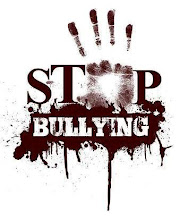Bullying is a form of abuse. It comprises repeated acts over time that involves a real or perceived imbalance of power with the more powerful individual or group abusing those who are less powerful.[2] The power imbalance may be social power and/or physical power. The victim of bullying is sometimes referred to as a target.
Bullying consists of three basic types of abuse – emotional, verbal and physical. It typically involves subtle methods of coercion such as psychological manipulation. Bullying can be defined in many different ways. Although the UK currently has no legal definition of bullying,[3] some US states have laws against it.[4]
Bullying in school and the workplace is also referred to as peer abuse.[5] Robert W. Fuller has analyzed bullying in the context of rankism.
Bullying can occur in any context in which human beings interact with each other. This includes school, church, the workplace, home and neighborhoods. It is even a common push factor in migration. Bullying can exist between social groups, social classes and even between countries (see Jingoism).
Bullying is an act of repeated aggressive behavior in order to intentionally hurt another person, physically or mentally. Bullying is characterized by an individual behaving in a certain way to gain power over another person.[6]
Norwegian researcher Dan Olweus defines bullying as when a person is
"exposed, repeatedly and over time, to negative actions on the part of one or more other persons." He defines negative action as "when a person intentionally inflicts injury or discomfort upon another person, through physical contact, through words or in other ways".[7]
*Sources: Wikipedia.org
*By: Syaziela



No comments:
Post a Comment